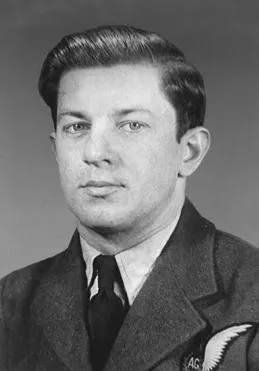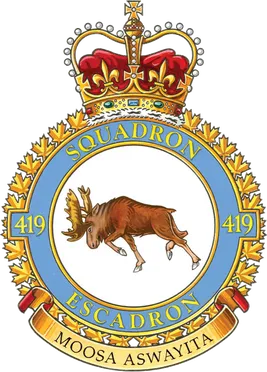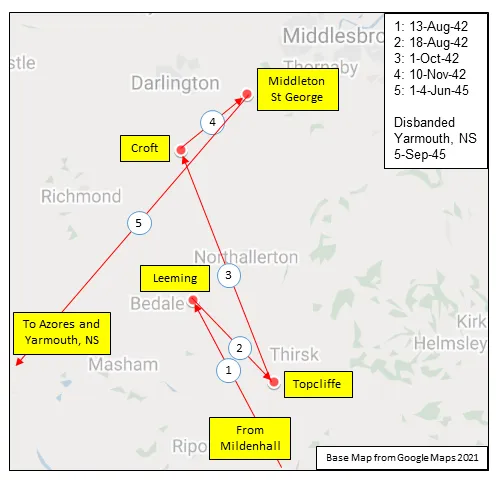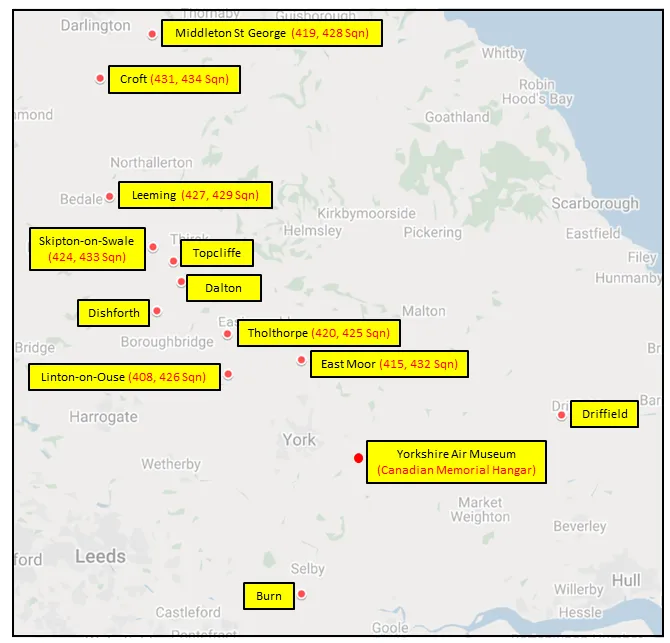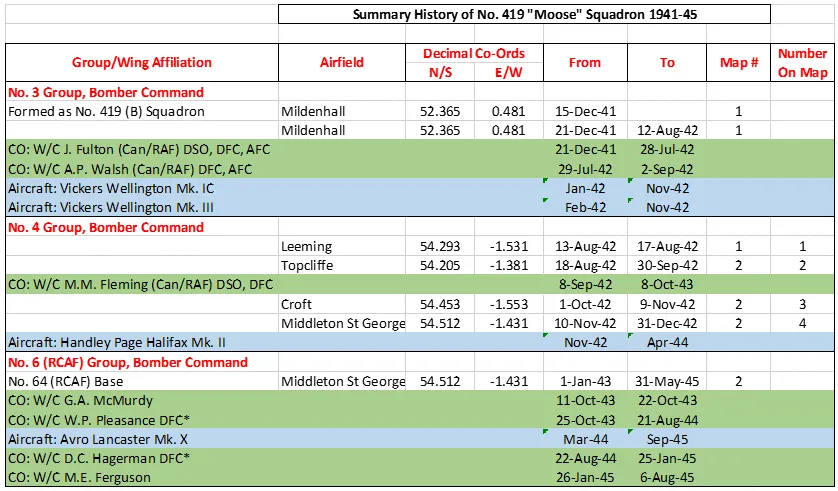This was Pilot Officer Mynarski's 14th operation
Addendum: MYNARSKI, Pilot Officer Andrew Charles (J/87544) - Victoria Cross - No 419 Squadron - Awarded as per London Gazette dated 11 October 1946 and AFRO 1042/46 dated 1 November 1946. Born in Winnipeg, 1916; home there (fabric cutter); enlisted there 29 September 1941. Trained at No 3 BGS (graduated 18 December 1942). Presented by AOC, No 2 Air Command to his mother in Winnipeg. The citation reads - "Pilot Officer Mynarski was the mid-upper gunner of a Lancaster aircraft, detailed to attack a target at Cambrai in France, on the night of 12th June, 1944. The aircraft was attacked from below and astern by an enemy fighter and ultimately came down in flames. As an immediate result of the attack; both port engines failed. Fire broke out between the mid-upper turret and the rear turret, as well as in the port wing. The flames soon became fierce and the captain ordered the crew to abandon the aircraft Pilot Officer Mynarski left his turret and went towards the escape hatch. He then saw that the rear gunner was still in his turret and apparently unable to leave it. The turret was, in fact, immovable, since the hydraulic gear had been put out of action when the port engines failed, and the manual gear had been broken by the gunner in his attempts to escape. Without hesitation, Pilot Officer Mynarski made his way through the flames in an endeavour to reach the rear turret and release the gunner. Whilst so doing, his parachute and his clothing up the waist were set on fire. All his efforts to move the turret and free the rear gunner were in vain. Eventually the rear gunner clearly indicated to him that there was nothing more he could do and that he should try to save his own life. Pilot Officer Mynarski reluctantly went back through the flames to the escape hatch. There, as a last gesture to the trapped gunner, he turned towards him, stood to attention in his flaming clothing, and saluted, before he jumped out of the aircraft. Pilot Officer Mynarski's descent was seen by French people on the ground. Both his parachute and his clothing were on fire. He was found eventually by the French, but was so severely burnt that he died from his injuries. The rear gunner had a miraculous escape when the aircraft crashed. He subsequently testified that had Pilot Officer Mynarski not attempted to save his comrade's life, he could have left the aircraft in safety and would, doubtless, have escaped death. Pilot Officer Mynarski must have been fully aware that in trying to free the rear gunner he was almost certain to lose his own life. Despite this, with outstanding courage and complete disregard for his own safety, he went to the rescue. Willingly accepting the danger; Pilot Officer Mynarski lost his life by a most conspicuous act of heroism which called for valour of the highest order. Detail provided by H Halliday, Orleans, Ontario
Flying Officer Monte Green of Winnipeg, Manitoba was in another 419 Sqn Lancaster about 100 yards away, and as the bomb aimer in the front of the aircraft, witnessed the attack, "The starboard wing was completely on fire in seconds. The Lancaster swerved toward us and we took evasive action. We were fairly low in our attack - between 5,000 and 8,000 feet, so the stricken Lancaster hit the ground in seconds it seemed. I met several of the crew when they they escaped back to Britain so heard what happened first hand"
There were three 419 Squadron Lancaster aircraft lost on this operation. Please see aircraft serials KB 714 VR-Y and KB 731 VR-S for additional information
source:They Shall Grow Not Old, BCATP Museum, Brandon MBThere were three 419 Squadron Lancaster aircraft and crews lost on this operation. Please see aircraft serials KB714 VR-Y and KB731 VR-S for additional information
![]() Recherche de France-Crashes 39-45
Recherche de France-Crashes 39-45
![]() Lancaster BX KB726 [Royal Air Force Serials and Image Database]...
Lancaster BX KB726 [Royal Air Force Serials and Image Database]...
